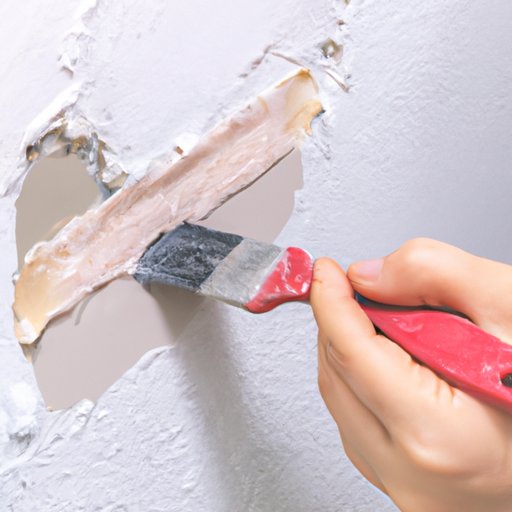
Introduction
Have you ever accidentally put a hole in your wall while trying to hang a picture or piece of art? Or perhaps your children got their hands on a sharp object and left behind a gash in the wall? These holes can be an eyesore and detract from your home’s overall appearance. However, there is no need to worry as there are multiple methods to fix these holes. The purpose of this article is to provide you with solutions for filling holes in walls, ranging from small nail holes to large gashes.
Traditional method: Spackling paste and spackling knife
The traditional method of filling holes in walls involves using spackling paste and a spackling knife. This method is ideal for small-to-medium-sized holes.
The process involves cleaning the area around the hole to get rid of any dust or debris. Then, apply the spackling paste to the hole with the spackling knife, being sure to spread it evenly over the hole. Once it has dried, sand down the area using sandpaper until it is smooth. You may need to apply a second coat of spackling paste if the hole is still visible.
Alternative method: Putty knife and joint compound
If you have a larger hole to fill, it is best to use a putty knife and joint compound. This method is ideal for larger holes.
The first step is to clean the area around the hole, just like in the traditional method. Then, apply the joint compound to the hole using a putty knife. Be sure to spread it evenly over the hole and cover any edges. Let it dry for several hours and then repeat the process two to three more times until the hole is fully filled and smooth. Sand down the area until it is level with the wall and paint over it to match the surrounding area.
Quick fix: Self-adhesive mesh patch
If you have a moderate-sized hole, you can use a self-adhesive mesh patch. This method is quick and easy to use.
Start by cleaning the area around the hole, just like in the previous methods. Then, place the self-adhesive mesh patch over the hole and apply a thin layer of joint compound over the top of it. Smooth out the edges of the mesh with your putty knife and let it dry for several hours. Once it has dried, repeat the process until the hole is filled and flush with the wall. Sand the area until it is smooth and then paint over it to match your wall.
Alternative quick fix: Toothpaste or soap
If you have only small nail holes to fill, you can use toothpaste or soap as a quick and easy solution.
Begin by cleaning the area around the hole with a damp sponge. Then, squeeze a small amount of toothpaste or soap onto your finger and apply directly to the hole. Make sure to get the toothpaste or soap into the hole and wipe away any excess with your finger or a damp sponge. Let it dry for a few hours and then apply a second coat. Once it has dried, sand down the area until it is smooth and then paint over it to match the wall.
Last resort: Cut out and patch with drywall
If you have a really large hole in your wall, your only solution may be to cut out the damaged area and patch it with drywall.
You will need to use a saw to cut out the damaged area, creating a rectangular shape with a straight edge. Cut a piece of drywall to the same size and shape of the hole and attach it to the wall using drywall screws. Apply joint compound to the seams and use a putty knife to smooth it out. Let it dry overnight and then sand down the patch until it is level with the wall. Then, paint over it to match the surrounding area.
Conclusion
There are multiple methods for filling holes in walls, ranging from small nail holes to large gashes. The traditional method of spackling paste and spackling knife is ideal for small-to-medium-sized holes, whereas a putty knife and joint compound is best for larger holes. A self-adhesive mesh patch is a quick fix for moderate-sized holes, and toothpaste or soap can be used for small nail holes. As a last resort, cutting out the damaged area and patching it with drywall may be necessary for really large holes. So, next time you put a hole in your wall, don’t panic! Try to fix it yourself before calling a professional.




